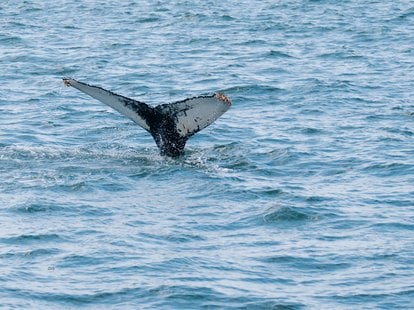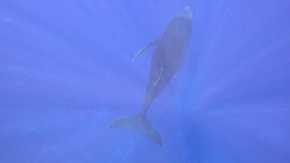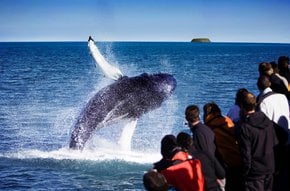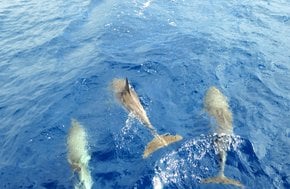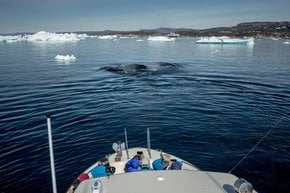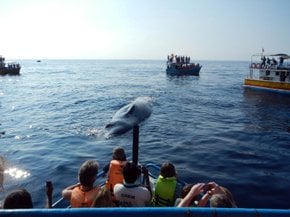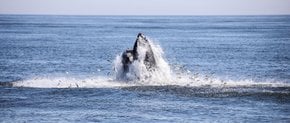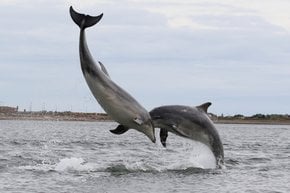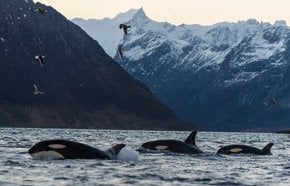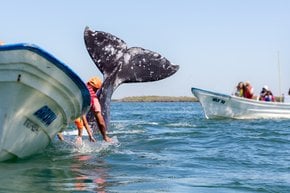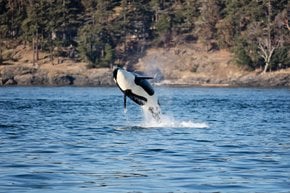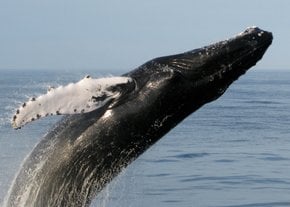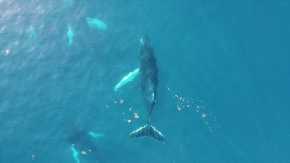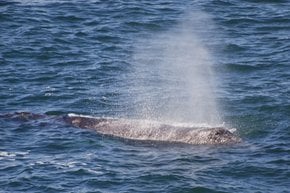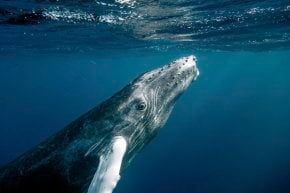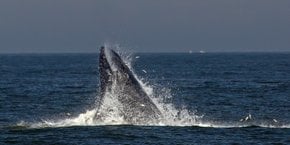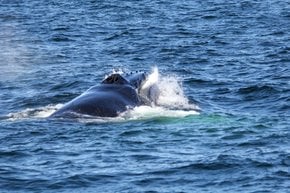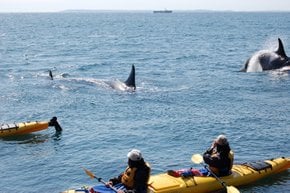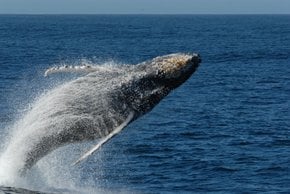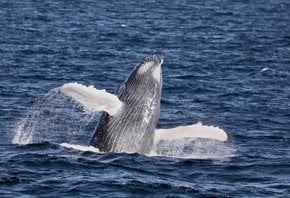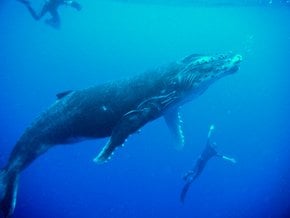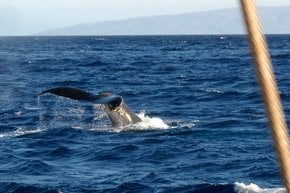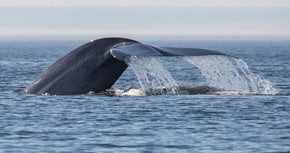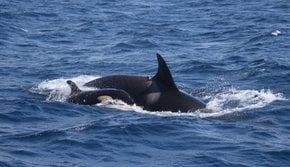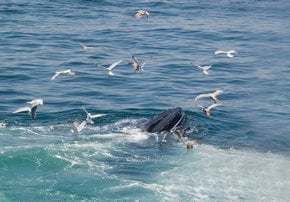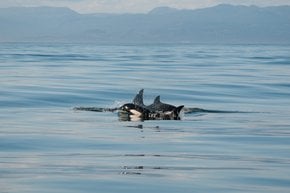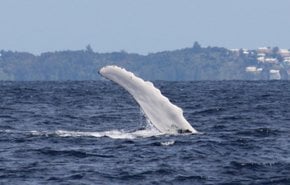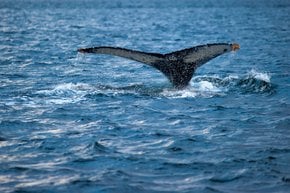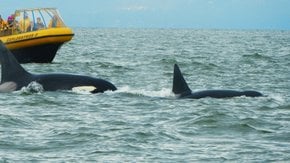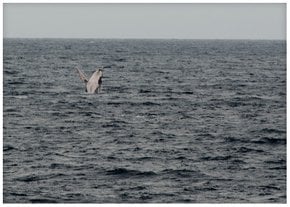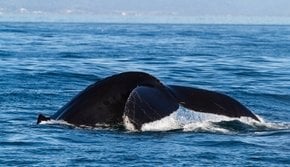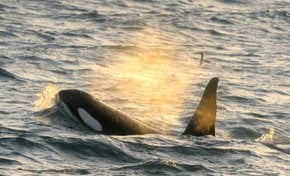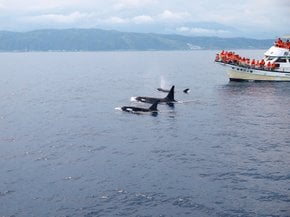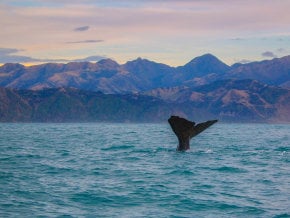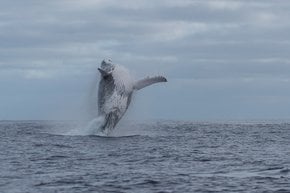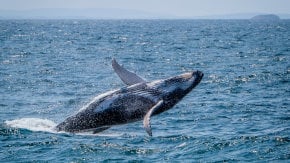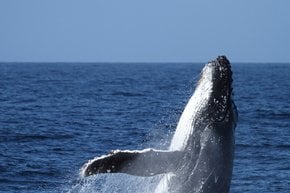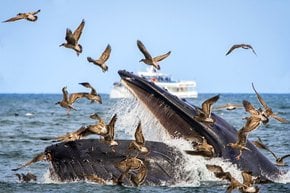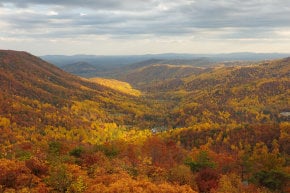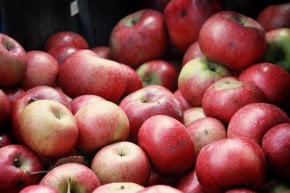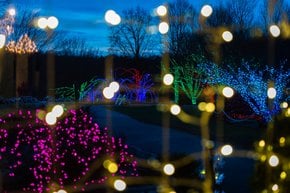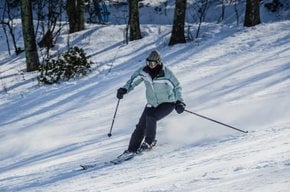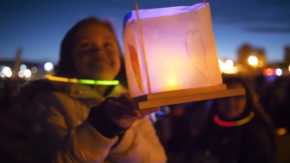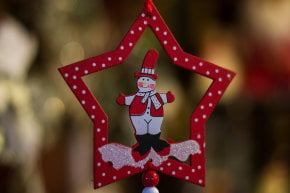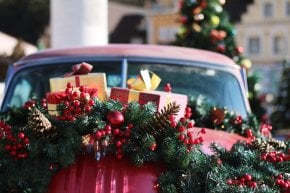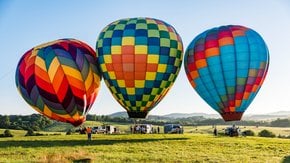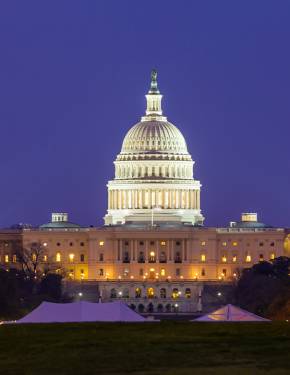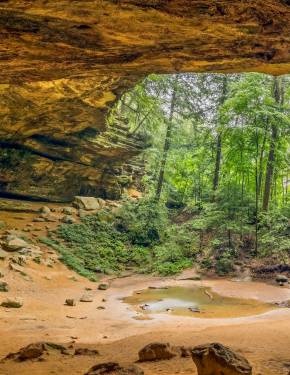Whale Watching in Virginia Beach 2025-2026
The favorite winter entertainment for nature lovers
Best time: December–March
Winter in Virginia Beach may be too cold for swimming, but it’s the perfect time for whale watching as humpback and fin whales migrate south from Canadian waters. These majestic creatures often stop in the nutrient-rich waters of Chesapeake Bay on their way to the Caribbean. Occasionally, visitors may also spot minke whales, the endangered Northern right whale, as well as harbor porpoises and seals.
Whale-Watching Season
Whales usually begin appearing off Virginia Beach in December, with peak sightings in January and February. However, migration patterns vary each year, so it’s recommended to check with local operators, such as the Virginia Aquarium or Rudee Tours, before booking a trip. The chances of spotting whales and dolphins are high, with a success rate of approximately 90%.
Best Places for Whale Watching
Whales can be observed just off the shore near Cape Henry or as far as 25 miles (40 km) out to sea. The Rudee Inlet, however, is considered the prime location for whale watching. Known for its rich marine life, Rudee Inlet offers one of the best opportunities along the East Coast to see whales and dolphins close to shore.
Whale-watching Cruises
Virginia Beach offers exciting whale-watching tours, allowing visitors to witness majestic marine mammals like whales, dolphins, seals, and seabirds. From December through mid-March, tours provide a chance to spot these creatures along the coastal waters. With experienced naturalists narrating the journey, each tour offers an educational experience, highlighting the local marine ecosystem. The tours typically last around 2 to 2.5 hours, and vessels are equipped with heated indoor seating, restrooms, and outdoor viewing decks for a comfortable experience. Ticket prices are about $35 for adults. While whale sightings are not guaranteed, most operators offer flexible rebooking options if no whales are spotted.
Types of Whales in Virginia Beach
Humpback Whales
Humpbacks that like to spend their summers in the Gulf of Maine are known for their playful behavior, like breaching and flipper slapping. They are the most abundant whale species in Virginia waters and often swim along with a whale watch boat. Humpbacks communicate through melodious calls that can be called "songs." These "songs" last up to 20 minutes. Being up to 55 ft (16 m) in length, humpbacks have flukes unique to each individual.
Fin Whales
Fin whales, the second-largest whale species, can also be spotted off the coast of Virginia Beach. They are easily distinguishable by their unique asymmetrical coloring— the lower right side of their jaw is white, while the lower left side is black. These massive creatures can grow up to 85 feet (25 meters) long and are known for their impressive speed, reaching up to 23 miles per hour (37 km/h). Despite their size, fin whales are swift and often travel in groups of two or more. With a lifespan of around 90 years, they are a remarkable sight for whale watchers along the coast.
North Atlantic Right Whales
The northern right whale, one of the world’s most endangered marine mammals, is easily recognizable by the distinctive callosities on its head—white patches of roughened skin that help identify individual whales. Unlike most other whale species, northern right whales lack a dorsal fin. These large sea mammals can grow up to 52 feet (16 meters) long, but they are relatively slow swimmers, making them easier to spot in the water. In recent years, sightings of northern right whales have increased off the coast of Virginia Beach as they migrate to their wintering grounds in Florida.
Minke Whales
Minke whales are frequently spotted during whale-watching tours in Virginia Beach, particularly in rough seas and choppy weather conditions. As one of the smaller whale species, they typically reach about 30 feet (9 meters) in length. Minke whales are easily identified by the distinctive white bands on their pectoral fins, often referred to as "Minke mittens." Despite their size, they are agile swimmers and a common sight for those venturing out on Virginia Beach whale-watching excursions.
Whale-Watching Tips
Weather can be unpredictable in winter, and rough seas can make whale sightings difficult. Foggy conditions and storms may also lead to cancellations. For the best experience, try to schedule your trip on a day with clear skies and calm waters. Morning tours tend to encounter fewer waves than evening ones.
What to Bring
Most whale-watching vessels offer food and drink for purchase, but it’s a good idea to bring cash as some boats may not accept credit cards. Binoculars and a camera with a powerful zoom are useful for spotting distant whales. Sunglasses are essential on sunny days, and if you are prone to seasickness, be sure to take medication beforehand.
What to Wear
Dressing for a winter whale-watching trip means layering up. A warm jacket with a hood, gloves, a hat, and rubber-soled shoes for better traction are recommended. It’s important to stay dry and comfortable to enjoy the experience fully.
Infrastructure
Virginia Beach offers a variety of amenities that make it an ideal destination for whale-watching tourists. The city boasts a multitude of excellent beachfront hotels, many of which offer significant discounts during the winter season, making it a perfect time for visitors to plan their trip. The three-mile-long boardwalk provides easy access to restaurants, shops, and entertainment, allowing tourists to explore the local area before or after their whale-watching excursions. Additionally, the city’s transportation options, including shuttles and buses, make getting around Virginia Beach convenient for travelers.

